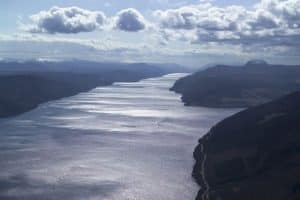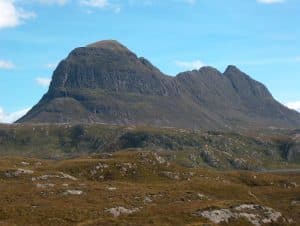 The next time you’re huffing and puffing up a steep mountain track, take a moment to consider why we even have mountains to explore.
The next time you’re huffing and puffing up a steep mountain track, take a moment to consider why we even have mountains to explore.
Nothing lasts in nature. Given time, lots and lots of time, towering mountain ranges wear down, expansive continents erode and vast oceans dry up and fade into obscurity.
Take the Caledonian Mountains, for example. It is difficult for our minds to grasp the concepts of geological time. While we are well-used to economists throwing around figures of billions of euro and trillions of dollars, it is nonetheless very difficult for us to imagine a timespan of hundreds of millions of years.
The Caledonian Mountains started forming some 438 million years ago. They got pushed up slowly as one of the results of ancient continents colliding with each other. Enormous forces were unleashed during the collision as the former continents rammed into each other. During a head-on crash of two cars the bonnets crumple and are thrust up into folds. Something similar happens during the head-on collisions of continents only it happens in extreme slow motion; so slowly, in fact, that the momentum of the gently moving continents carries the process on over millions of years.
During the ancient continental collision, existing rocks crumpled and folded and the mountai n chain emerged. In our part of the world the Caledonian mountain range stretched from Ireland to Scotland, formed the spine of Norway and continued into parts of Sweden and Greenland. The name ‘ Caledonian’ is derived from the study of the ancient mountain range in Scotland; when the Romans invaded Britain they used the placename Caledonia for the territory we now call Scotland.
n chain emerged. In our part of the world the Caledonian mountain range stretched from Ireland to Scotland, formed the spine of Norway and continued into parts of Sweden and Greenland. The name ‘ Caledonian’ is derived from the study of the ancient mountain range in Scotland; when the Romans invaded Britain they used the placename Caledonia for the territory we now call Scotland.
The Caledonian mountains are long-gone as a continuous mountain range. Much of the range has eroded and has been recycled. However, isolated bits of the core of the former chain remain. These remains form two distinct provinces in Ireland: one in the west and north-west and one in the east and southeast. The present day mountains in much of counties Donegal, Mayo and Galway comprise the north-western element and the chain of mountains running through counties Dublin, Wicklow and Wexford comprise the south-eastern element.
The very impressive cone-shaped peaks of such mountains as Croagh Patrick in Co Mayo and the Sugarloaf in Co Wicklow are part of the legacy of the great Caledonian mountain-building event.
The original Caledonian Mountain range probably had towering peaks with dramatic sharp, sculpted features. Erosion over  the past 400 million years resulted in the surviving, present day legacies of the mountain range being gently rounded.
the past 400 million years resulted in the surviving, present day legacies of the mountain range being gently rounded.
So, the next time you are out hill-walking in the Scottish mountains, canoeing down the River Spey or the Great Glen Canoe Trail (Caledonian Canal), or sea kayaking along the west coast of Scotland, take a minute to consider the process through which the land morphed into its current form. You might need more than a minute!
Learn more about the Caledonian Mountains: wikipedia or Scottish Geology
Why not share this on Facebook or Twitter?
Thanks to Jim Hurley of the New Ross Standard for this information.
